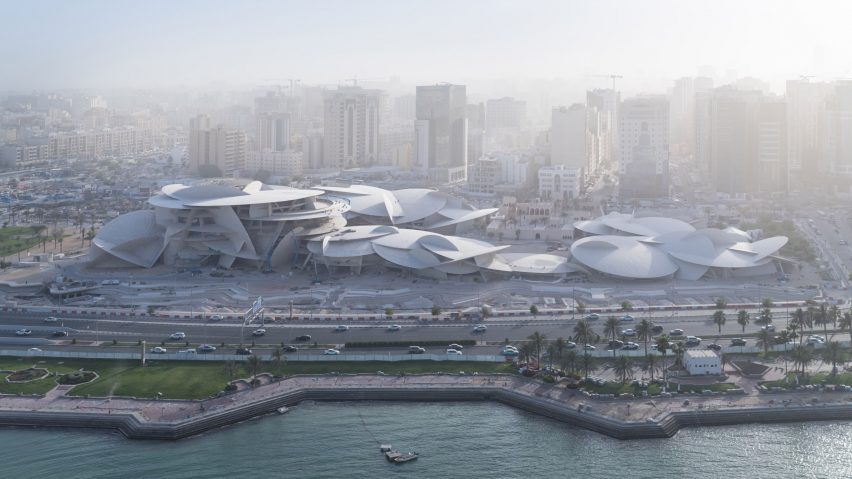
Ten cultural buildings completed in Qatar ahead of the 2022 World Cup
Qatar has invested huge sums of money to expand its cultural offerings ahead of the 2022 FIFA World Cup with statement buildings by some of the world's biggest architects. Here, we round up 10 architectural landmarks that have recently been built in and around Doha.
Since winning the bid to host the World Cup in 2010, the Gulf state has focused on transforming itself into "a beacon of art and culture", according to the tournament's organisers.
World-leading architects have been creating new museums, archives and hotels for the nation, as well as a series of extravagant football stadiums, collectively estimated to have cost in the region of £165 billion ($200 billion).
However, the cost of constructing these attractions has reportedly been more than just financial, with 6,500 migrant workers dying in the country since it won the right to host, according to the Guardian. Although according to football's governing body FIFA there have only been 37 deaths connected to the construction of the World Cup stadiums.
Qatar's updated cultural offering includes museums designed by Jean Nouvel and IM Pei, two buildings by OMA and artworks by designer Faye Toogood and artist Olafur Eliasson.
Read on for details of 10 architectural attractions in Qatar:
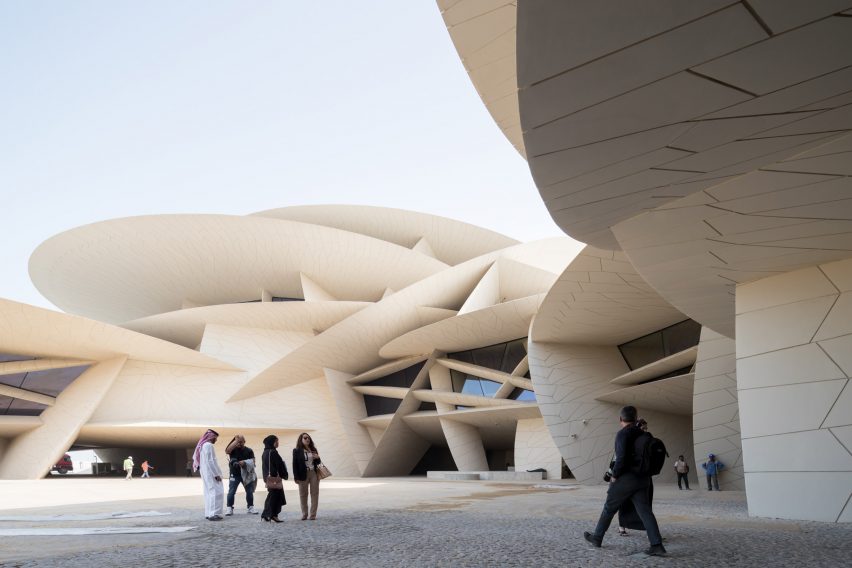
National Museum of Qatar by Jean Nouvel
Designed by Pritzker Architecture Prize-winning architect Jean Nouvel, the National Museum of Qatar is a 52,000-square-metre building designed to chronicle the country's past and present.
Its distinctive form is made from a steel superstructure that supports a series of sand-coloured discs, interlocked to evoke a desert rose mineral formation.
The building was completed in 2019 in an emerging civic quarter with several other cultural institutions including IM Pei's Museum of Islamic Art, which also features on this list.
Inside, irregularly-shaped galleries are arranged around a courtyard, alongside a pair of cavernous gift shops fitted out by Koichi Takada Architects with undulating wooden surfaces.
Find out more about National Museum of Qatar ›
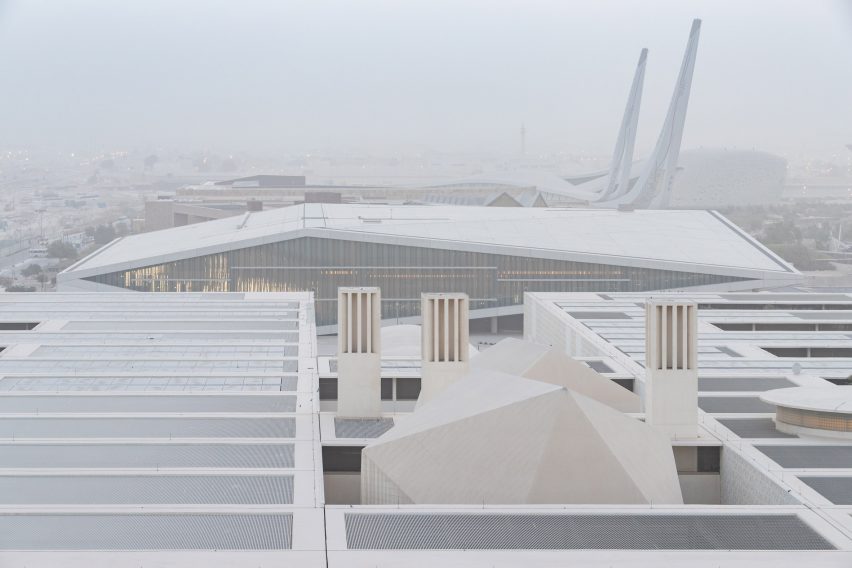
Tiers of marble bookcases feature inside the grand Qatar National Library, which Rem Koolhaas' firm OMA created in Doha to house important Qatari texts and manuscripts.
Outside, it is distinguished by its angular concrete form, which is contrasted with a more delicate facade of fluted glass.
The building is situated on a site in Education City, Doha's academic district, close to and the new Education City Stadium that will host the upcoming World Cup games.
Find out more about Qatar National Library ›
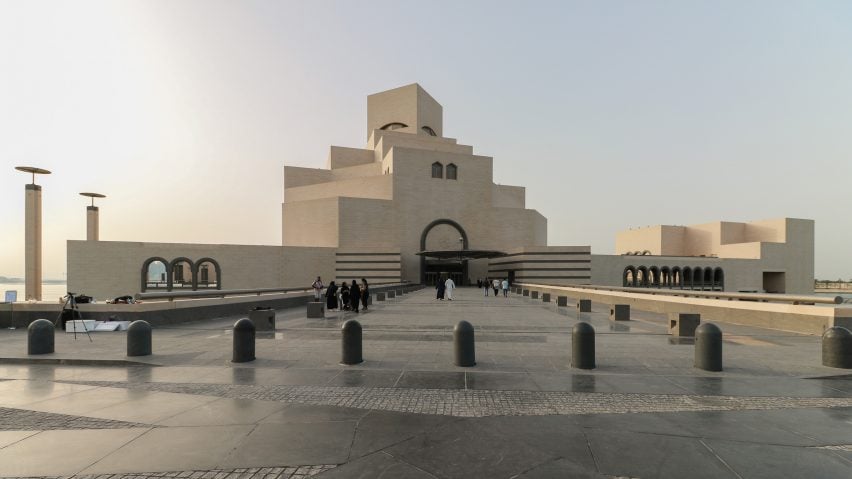
Museum of Islamic Art by IM Pei
One of the most iconic buildings in Qatar is the Museum of Islamic Art, which Chinese-American architect IM Pei created on an artificial island off the Doha Corniche promenade.
It has a blocky, staggered form that ascends to form a five-storey tower and contains a central atrium surrounded by galleries. A highlight of the building is a curtain wall on the north side, which provides views of the Arabian Gulf from all five of its floors.
It was reopened in October after a year-long revamp of its interior to ensure it could accommodate a larger audience.
Find out more about Museum of Islamic Art ›
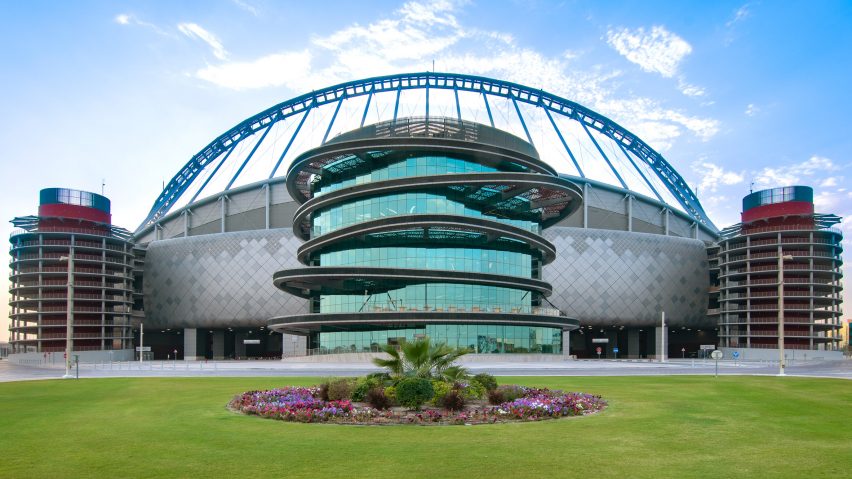
3-2-1 Qatar Olympic and Sports Museum by Joan Sibina
Visitors to Qatar's Khalifa International Stadium in Doha will also see a cylindrical sports museum protruding from one side, designed by Spanish architect Joan Sibina.
Named the 3-2-1 Qatar Olympic and Sports Museum, it has a glass form wrapped in rings that nod to the interlocked rings of the Olympic symbol.
Inside, it contains seven exhibition spaces curated to different themes, as well as a cafe, restaurant and gift shop.
Find out more about 3-2-1 Qatar Olympic and Sports Museum ›
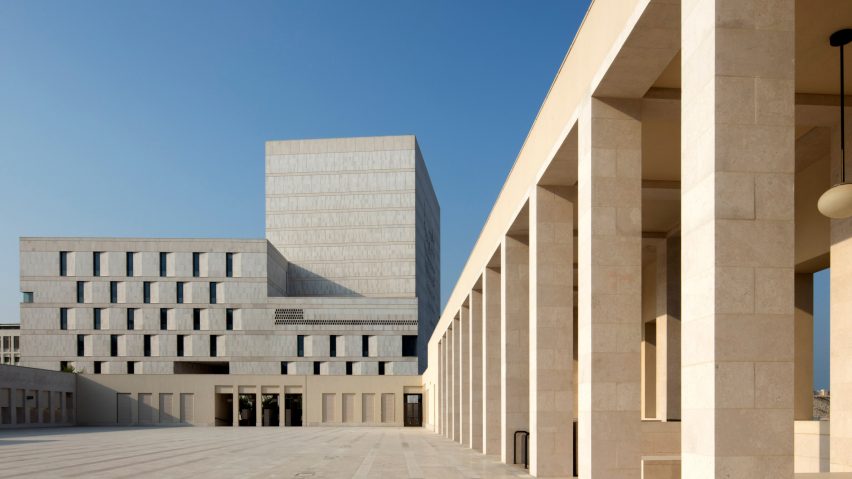
Qatar National Archive by Allies and Morrison
Vernacular architecture including coastal watchtowers informed Allies and Morrison's fragmented and geometric design for the Qatar National Archive in Doha.
The building unifies a high-performance storehouse for Qatar's archive and public facilities, wrapped by stone cladding punctured by recessed windows and cavernous openings.
It forms part of the wider pedestrian-friendly Msheireb Downtown Doha masterplan being developed by the London studio, which comprises nearly 100 buildings including an adjacent open-air Eid Prayer Ground.
Find out more about Qatar National Archive ›
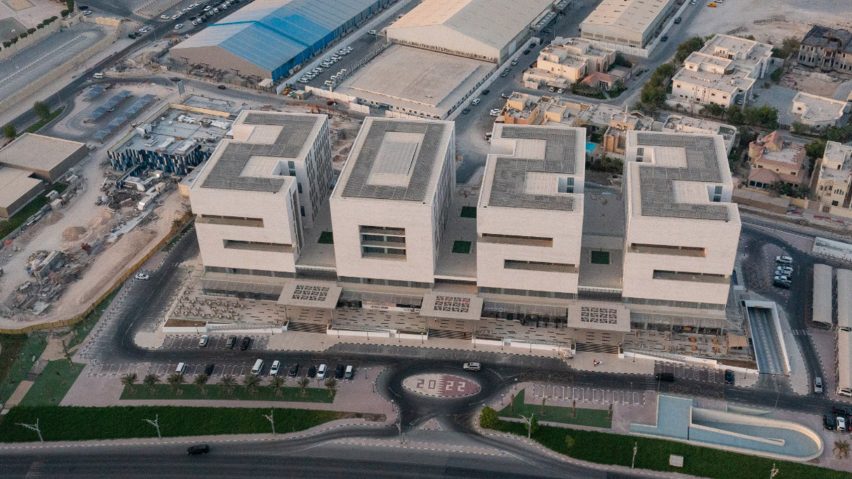
Iconic 2022 by Ibrahim M Jaidah
One of the most unusual buildings on the list is Iconic 2022. Built close to the 3-2-1 Qatar Olympic and Sports Museum, it has a facade depicting the number 2022.
It was designed by architect Ibrahim M Jaidah to celebrate the year of the Qatari World Cup and according to its developer, it is "the first building in the world to resemble a year".
Divided over its four number-shaped blocks, Iconic 2022 contains a supermarket, cafe and restaurants, as well as a sports centre, health clubs and offices for several sporting bodies. The number 2022 can also be seen on its roof, where paving is combined with mesh-covered areas.
Find out more about Iconic 2022 ›
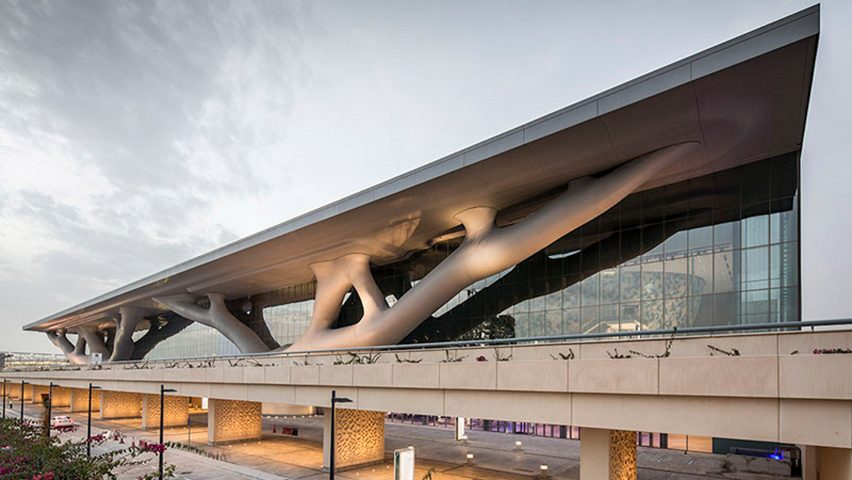
Qatar National Convention Centre by Arata Isozaki
Another building in the Education City is the Qatar National Convention Centre, which was completed by Japanese architect Arata Isozaki in 2011.
The centre is characterised by its gigantic tree-like columns, visible inside and out, which support the building's overhanging roof.
According to its designer, it is intended to emulate the Sidrat al-Muntaha, a holy Islamic tree that is believed to symbolise the end of the seventh heaven.
Find out more about Qatar National Convention Centre ›
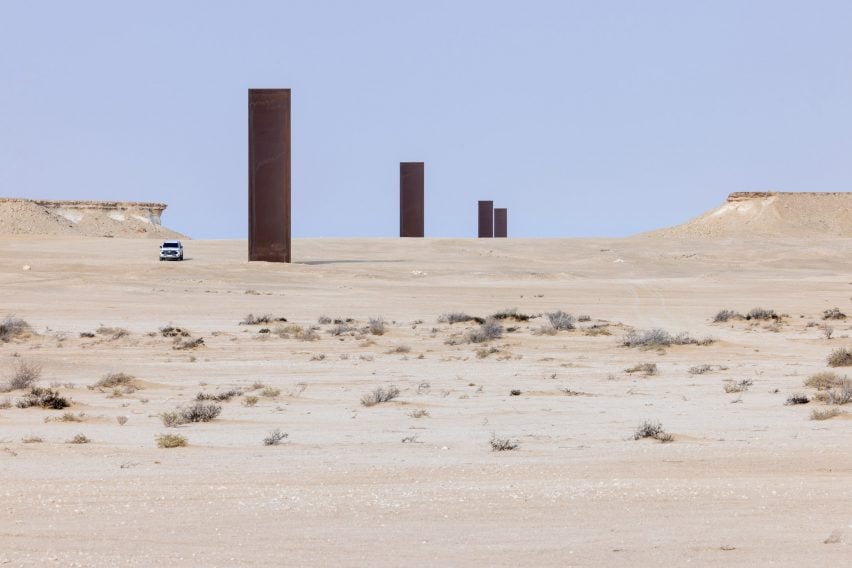
Qatar Museums installations by various designers
More than 100 artworks have been installed in public spaces around Qatar ahead of the World Cup, as part of an existing program of outdoor installations by Qatar Museums.
Among them are works by the likes of American artist Richard Serra (pictured), British designer Faye Toogood and Danish-Icelandic artist Olafur Eliasson. Artists Martin Creed and Yayoi Kusama also have sculptures on show, alongside Qatari artists Shua'a Ali and Shouq Al Mana.
The existing artworks in the programme include The Miraculous Journey, a piece by Damien Hirst comprising 14 sculptures that depict the journey from foetus to baby.
Find out more about the Qatar Museums installations ›
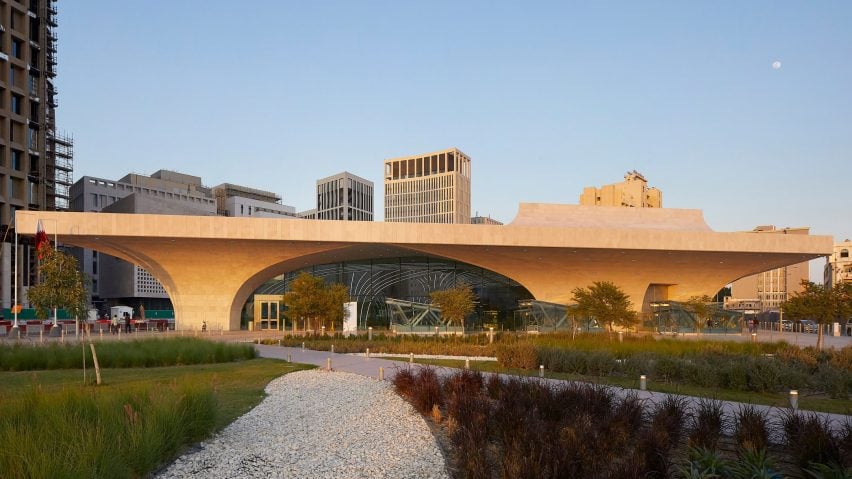
Spectators of the FIFA 2022 World Cup Qatar can expect to travel to the stadiums via a series of new Metro stations, created by UNStudio ahead of the tournament.
Thirty-seven stations were designed with the Qatar Rail Architecture Department across the three lines of the driverless network. They are all unique but united by the same design language that consists of modular vaulted elements and large entrance halls.
According to UNStudio, the aim of the project "was to reference local, traditional architectural heritage, while reinterpreting this into a contemporary design language".
Find out more about Doha Metro system ›
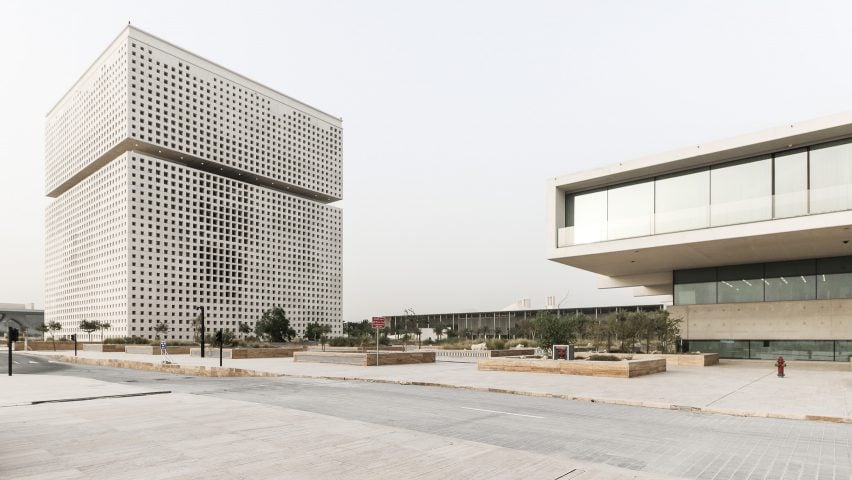
Qatar Foundation Headquarters by OMA
Another building on the list by OMA is the Qatar Foundation Headquarters, the 57-metre-high office building of the Qatar Foundation charity.
It has a monolithic form formed from precast white concrete and punctured by a grid of small openings, arranged in a way that creates a pixellated image of a Sidra tree – the charity's logo.
Find out more about Qatar Foundation Headquarters ›